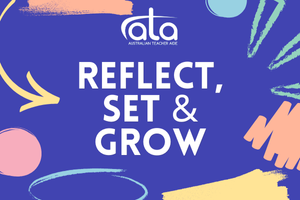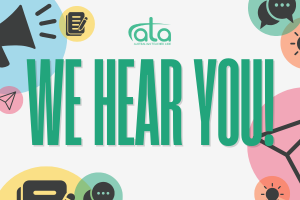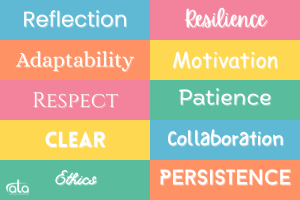I’ve Got a TA in My Class, But I Don’t Know What to Do with Them!
Have you heard a teacher say this? It’s a common phrase, especially from teachers who’ve had little or no training in how to effectively work with a teaching assistant (TA).
Let’s break this down, starting with the big C’s: Confidence to Collaborate through Communication!
Whether you're a TA, the leader of a support team, a school executive, or a classroom teacher keen to improve your collaboration, effective communication is key. When we strengthen the working relationship between teachers and TAs, we ultimately enhance student learning outcomes.
Step One: Intentional Conversations – with a Script!
That’s right. It’s simple and powerful.
In the precious (and often limited) time when teachers and teaching assistants are together, intentional conversations can make all the difference. Equipping TAs with a script of structured prompts can help initiate those conversations with clarity and purpose.
Here are some sample questions aligned to the ATAPS framework to kick-start collaboration in your classroom or school:
Standard 1: Know Students and How They Learn
- How are students progressing academically?
- Are there any students who may need extra support?
- What can we do to help students better understand the content?
- How can we support students who are falling behind?
Standard 2: Know How to Support Learning and Teaching
- What’s working well in our lessons?
- When have students been particularly engaged?
- Are there any challenges with the current lesson plan? How might we address them?
- How can we prepare for upcoming units together?
Standard 3: Collaborate to Implement Effective Learning Support
- What’s working well in how we currently communicate?
- Are there ways to make our communication more efficient?
- Are there students who need targeted or planned support?
- Do we need to prepare any specific resources for learning?
- Do we feel confident using the tools and resources we have?
Standard 4: Support Safe and Inclusive Learning Environments
- How are our classroom routines going?
- Are there areas where students are struggling with behaviour or expectations?
- What strategies have been successful in managing behaviour?
- How can we ensure our classroom is inclusive, respectful, and safe for all students?
Standard 5: Contribute to Assessment and Feedback
- What feedback are students receiving?
- Is the feedback clear, constructive, and timely?
- How can we make sure students understand and act on their feedback?
- What role do we each play in collecting and recording student data?
Standard 6: Engage in Professional Learning
- Are there any strategies or professional learning topics you’d like to explore?
- How can we support each other in developing our teaching practice?
- Are there resources or tools that could help you in your role?
Standard 7: Engage Professionally with Colleagues and the School Community
- How can we improve our communication and coordination during lessons?
- How can we involve families more in supporting student learning – both at school and at home?
It Starts with a Conversation!
You may have read some of these prompts and thought, “Teachers will feel threatened” or “TAs might feel overwhelmed.”
Yes, and that’s okay.
If we don’t start having these professional conversations, we’ll remain at surface-level support, missing the chance to provide intentional, effective help where it matters most – with our students.
We need to see each other as the professionals we are. When we engage in structured, honest dialogue, we move from co-existing to co-teaching. From silence to support. From assistance to authentic collaboration!


